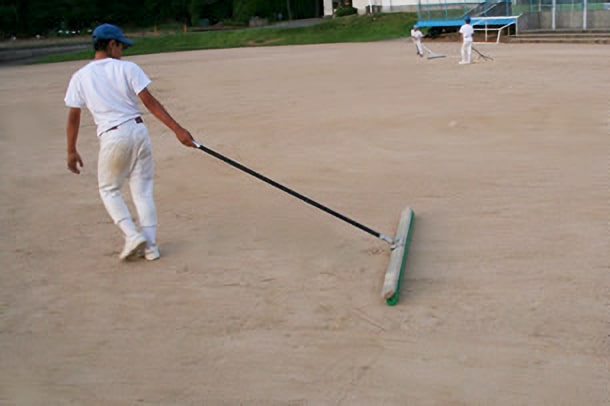
Shohei Ohtani thoroughly sets and manages his goals in order to succeed in the major leagues.
His goal setting sheet is more than just a planning document; it serves as a guidepost to success.
Through this seat, he has maximized his abilities and continues to grow.
In this article, we will explain the details of the goal setting sheet that Shohei Otani actually uses, and introduce in detail its effectiveness and how to create it.
He also explains how goal setting sheets have contributed to his success, using specific examples.
Please understand how Otani’s goal setting sheet works and use it to achieve your own goals.
In the next section, we will delve into specifics.
目次
- 1 What is Shohei Otani’s goal setting sheet?
- 2 Importance of goal setting sheet
- 3 Composition of Shohei Otani’s goal setting sheet
- 4 Example of Shohei Otani’s goal setting sheet
- 5 How to create a goal setting sheet
- 6 Tips for using goal setting sheets
- 7 Shohei Otani’s secret to achieving his goals
- 8 Shohei Otani’s future goals
- 9 Application of the goal setting sheet to other athletes
What is Shohei Otani’s goal setting sheet?
Shohei Otani uses a method called a “mandala chart” to set goals.
This goal setting sheet was created during his freshman year of high school and has become an important tool in supporting his success.
Mandala charts are inspired by Buddhist mandalas and consist of 81 9×9 squares.
This sheet consists of placing the main goal in the center and surrounding it with the elements necessary to achieve the goal.
Goal Setting Sheet Overview
In the center of the mandala chart, set the major goal you want to achieve.
In Otani’s case, his major goal was to be drafted number one by eight professional baseball teams .
Next, fill in the 8 squares around it with the elements necessary to achieve that goal.
For example, “physical development”, “human nature”, “mental health”, “control”, “sharpness”, “160km/h speed”, “curving ball”, “luck”, etc.
To make these elements more concrete, we will set eight behavioral goals for each element.
For example, in order to “build a body,” you might “manage your diet,” “plan your muscle training,” and “improve your flexibility.”
Similarly, to increase your luck, you can say “say hello,” “pick up trash,” “clean your room,” “thank the referee,” “read a book,” and “have positive thoughts.” ”, “Take care of your tools”, and “Become a person who is supported”.
In this way, the mandala chart is a very effective tool for translating goals into concrete actions.
Otani was able to use this sheet to strengthen his weaknesses and maximize his strengths.
This became the foundation of his success and led him to play in the major leagues.
History and development of goal setting sheets
The motivation for Otani to create a goal-setting sheet was the guidance of Hanamaki Higashi High School coach, Sasaki Hiroshi.
Director Sasaki adopted a goal-achievement technique called the “Harada Method,” and introduced the Mandala Chart as part of that.
This method is applied not only by Otani but also by many athletes and business people.
Mandala charts were invented in 1987 by management consultant Yasuo Matsumura.
Since then, many people have used this technique to achieve their goals.
Otani has also used this method since high school to clarify his goals and plan specific actions to achieve them.
This became the foundation of his success and led him to play in the major leagues.
Otani’s goal setting sheet is more than just a plan; it provides concrete action guidelines, and is an important tool that supports his growth both mentally and physically.
Through this sheet, he was able to strengthen his weaknesses and maximize his strengths.
So that’s an overview of Shohei Ohtani’s goal setting sheet, its history and development.
Using this sheet, he was able to clarify his goals and take concrete steps to achieve them.
This is one of the secrets of his success, and by adopting this method, you too can use it to help you achieve your goals.

Importance of goal setting sheet
Goal setting is an important element in paving the path to success for athletes.
Especially for athletes like Shohei Otani who are required to perform at a high level, setting clear goals and managing them is essential in daily training and competitions.
In this chapter, we will explain in detail the role of goal setting for athletes and the significance of the goal setting sheet for Shohei Otani.
The role of goal setting in athletes
Goal setting has many benefits for athletes, including:
-
Increased motivation : Having clear goals allows athletes to take concrete steps towards achieving them. This increases motivation in daily training and promotes self-growth.
-
Improved performance : Having specific goals allows athletes to objectively evaluate their performance and identify areas for improvement. This allows you to create an efficient training plan.
-
Staying focused : Having a clear goal helps athletes stay focused on achieving it. Especially under pressure during a match, goals provide mental support to players and help them play calmly.
-
Improved time management : Goal setting is the foundation for effectively managing your training, practice, and rest time. Athletes can easily organize their own schedules and lead lean lives.
The significance of the goal setting sheet for Shohei Ohtani
For Shohei Otani, the goal setting sheet is not just a plan, but a guidepost to success.
Behind his success were specific strategies and actions that utilized this sheet.
-
Clarification of long-term vision : Otani had a clear long-term vision as a professional baseball player. On his goal-setting sheet, he had a specific goal: “Be drafted first by eight professional baseball teams.” This goal guided him throughout his career and drove his daily efforts.
-
Specific action plan : Through the goal setting sheet, Ohtani created a specific action plan. For example, he set detailed goals such as training to improve his physical strength and reading to improve his mental strength, and by carrying out these goals, he was able to ensure the path to achieving his goals.
-
Feedback and Improvement : Otani regularly reviewed his goal setting sheet and evaluated his progress. This allowed him to track his progress and make necessary adjustments to ensure he was always performing at his best. This feedback process helped him improve.
-
Staying Motivated : Having a clear goal in mind helped Ohtani stay highly motivated. He was willing to put in the effort necessary to achieve his goal and to continue to push himself to his limits. This attitude was the key to his success.
Shohei Otani’s goal setting sheet is more than just a plan, it is an important tool that supports his success.
Using this sheet, he was able to clarify his goals and take concrete steps to achieve them.
This is a useful technique not only for athletes, but also for people who strive for success in any field.
The above is an explanation of the role of goal setting for athletes and the significance of the goal setting sheet for Shohei Ohtani.
Adopting this method will help you achieve your goals.

Composition of Shohei Otani’s goal setting sheet
Shohei Ohtani’s goal setting sheet is an important tool for him to have a clear vision and take concrete steps towards achieving it.
This sheet consists of setting short-term goals and long-term goals in a well-balanced manner, and describing in detail a specific action plan to achieve them.
In this chapter, we will explain in detail the structure of Shohei Ohtani’s goal setting sheet.
Setting short-term and long-term goals
Shohei Otani’s goal setting sheet clearly separates short-term goals and long-term goals.
Short-term goals are concrete, achievable goals in your daily training and competitions, while long-term goals represent a broader vision for your entire career.
-
Short-term goals : Short-term goals are specific goals for your daily activities and training. Examples include specific, measurable goals such as “I’ll get 3 hits in my next game” or “I’ll increase my speed by 2 mph this month.” These goals are important for maintaining daily motivation and realizing personal growth. By achieving short-term goals, you accumulate small successes that lead to achieving long-term goals.
-
Long-term goals : Long-term goals are big visions that span your entire career. In Ohtani’s case, his big goals were to be drafted first by eight professional baseball teams and to be selected as an All-Star in the major leagues. These long-term goals guide his career and encourage long-term effort and planned actions. Having long-term goals helps you to have a consistent sense of purpose in your daily training and games.
concrete action plan
Shohei Ohtani’s goal setting sheet details a specific action plan for achieving his goals.
This helps ensure that your goals are not just aspirations, but tangible plans.
-
Detailed action plan : The goal setting sheet includes specific actions to achieve each goal. For example, to “build your body,” you can take specific actions such as “doing one hour of strength training every day” and “eating a balanced diet.” In addition, “mental strength” includes actions such as “meditating for 30 minutes every day” and “having a session with a mental coach once a week.”
-
Monitoring progress : The action plan will be reviewed and evaluated on a regular basis. Otani will regularly monitor his progress toward achieving his goals and revise his plan as necessary. This allows you to be flexible and make sure you’re making steady progress toward your goals. This process is an important element of self-evaluation and feedback, encouraging continuous improvement.
-
Setting specific results : An action plan also includes setting specific results. For example, specific results such as “increase your bench press weight by 10kg in three months” or “reduce your running time by one minute in six months.” This allows you to visualize the specific results of achieving your goal and gives you a sense of accomplishment.
Shohei Otani’s goal setting sheet has become an important tool to support his success by clearly dividing short-term goals and long-term goals and writing detailed action plans to achieve them. Masu.
Using this sheet, he was able to clarify his goals and take concrete steps to achieve them.
The above is an explanation of the structure of Shohei Otani’s goal setting sheet. Adopting this method will help you achieve your goals.

Example of Shohei Otani’s goal setting sheet
Shohei Otani has been using a goal setting sheet to achieve specific goals.
This sheet is a key factor behind his success, showing clear goals and a detailed plan to achieve them.
In this chapter, we will explain in detail the example of Shohei Otani’s goal setting sheet, specific examples of goal achievement, and lessons learned from successes and failures.
Specific examples of goal achievement
The goal-setting sheet that Shohei Ohtani created during his high school years lists his specific goals and a detailed plan for how to achieve them.
For example, one of his main goals was “to be drafted number one by eight professional baseball teams.”
To achieve this goal, the following specific elements and action plans were set.
-
Body building :
- Specific action plan: “Do one hour of strength training every day,” “Eat a balanced diet,” and “Take necessary supplements.”
- Result: Since his high school days, Otani has had an excellent physique and physical strength, and has laid the foundation for becoming a professional baseball player.
-
Mental strength :
- Specific action plan: “Meditate for 30 minutes every day,” “Have a weekly session with a mental coach,” “Read a self-help book.”
- Result: Having a strong mentality allows me to play calmly under pressure.
-
Technology Improvement :
- Specific action plan: “Improve pitching form,” “Practice pitching 100 pitches every day,” and “Perform video analysis.”
- Result: By improving his pitching technique, he was able to use high-speed pitches and a variety of breaking balls to strike out many batters.
By implementing these specific action plans, Otani was able to achieve his short-term goals and ultimately realize his long-term goals.
Here’s one example of his success and shows the power of goal-setting sheets.
learn from success and failure
Shohei Otani’s goal setting sheet functions as a tool for learning not only from successes but also from failures.
Here are some of the lessons Ohtani has learned from his successes and failures.
-
Importance of Feedback :
- Otani has consistently performed at his best by regularly monitoring his progress toward achieving his goals and making necessary adjustments. Through the feedback process, I was able to continue to grow by self-evaluating and improving.
-
Flexibility and adaptability :
- When unexpected obstacles arose in the process of achieving his goals, Otani was able to respond flexibly and modify his plans. For example, when he was injured, he revised his rehabilitation plan and worked to regain his physical condition, which allowed him to perform at a high level again.
-
Learning from failure :
- Viewing failure as a step towards success, Otani learned from his mistakes and tried not to make them again next time. For example, we analyzed mistakes made in matches and identified their causes in order to make technical improvements.
-
Continuous improvement :
- Otani always aimed for self-improvement and continued to push his limits by reviewing his training methods and strategies. This allowed him to constantly grow and aim for new heights in his career.
These lessons are key points for using goal setting sheets effectively.
Shohei Ohtani’s success was achieved by setting clear goals and a concrete action plan, as well as incorporating feedback, flexibility, and learning from failure.
The above is an explanation of an example of Shohei Ohtani’s goal setting sheet.
Through concrete examples of goal achievement and lessons learned from successes and failures, you will understand the importance and effectiveness of goal setting sheets.

How to create a goal setting sheet
A goal setting sheet is a powerful tool for setting clear goals and creating a specific plan to achieve them.
By using this method that contributed to Shohei Otani’s success, you too can take concrete steps towards achieving your goals.
This chapter details the tools and resources you need to create a goal-setting sheet, as well as effective goal-setting techniques.
Tools and resources needed
To create a goal setting sheet, you will need the following tools and resources:
-
Paper and pen or digital tools : Paper and pen are the basics for creating a goal setting sheet, but you can also use digital tools. You can manage more efficiently by using Excel, Google Spreadsheets, or specialized applications (such as Kaonavi’s goal management system).
-
Templates : For goal-setting sheets like mandala charts, it’s helpful to use specific templates. It uses a template consisting of 81 9×9 squares, with the main goal set in the center and the necessary elements written around it. There are many templates available for free download on the internet.
-
Resources and references : Effective goal setting requires the right resources and references. Examples include books, online courses, and expert advice to help you learn the knowledge and skills you need to reach your goals. This allows you to plan concrete steps towards achieving your goals.
Effective goal setting techniques
To effectively create a goal setting sheet, use the following techniques.
-
Setting SMART goals : Goals should be specific, measurable, achievable, relevant, and time-bound. For example, the goal of “get 3 hits in my next game” is a good fit for the SMART criteria.
-
Balance between short-term and long-term goals : It is important to set a good balance between short-term and long-term goals. Short-term goals can help motivate you on a day-to-day basis, while long-term goals clarify your overall career vision and encourage sustained effort. For example, set short-term goals to be achieved within a month and long-term goals to be achieved in a year.
-
Create a specific action plan : Create a specific action plan to achieve each goal. For example, clearly state your specific actions, such as “Do one hour of strength training every day” or “Have a session with a mental coach once a week.” This allows you to take concrete steps towards achieving your goals.
-
Regular Feedback and Evaluation : Regularly evaluate your progress toward achieving your goals and revise your plan as necessary. For example, review your progress once a month and adjust your plan if you aren’t meeting your goals. This process fosters self-evaluation and improvement, supporting sustainable growth.
-
Use visualization : Visualize your goals to visualize your goals. Mandala charts are one example. By placing the goal at the center and surrounding it with the elements and actions needed to achieve it, it becomes easier to see the big picture.
-
Build a support system : Building a support system is important to achieving your goals. Having support from family, friends, and colleagues can help you stay motivated and get through difficult situations. For example, you might want to regularly share your progress toward your goals and get feedback.
By using these techniques, you can effectively create a goal setting sheet and take concrete steps toward achieving your goals.
The above is an explanation of how to create a goal setting sheet.
By understanding the tools and resources you need and effective goal-setting techniques, you can create a concrete plan to reach your goals.

Tips for using goal setting sheets
A goal setting sheet is a powerful tool for clarifying your goals and creating a specific plan to achieve them.
But to get the most out of this tool, regular reflection and feedback, as well as continuous improvement and adaptation, are essential.
In this chapter, we will explain in detail tips for effectively using the goal setting sheet.
Review and feedback
Reflection and feedback play a very important role in the process of achieving goals.
Regularly checking your progress and receiving appropriate feedback allows you to self-evaluate and improve.
-
Regular Reviews : Reviews are the process of regularly checking your progress toward achieving your goals. For example, once a week or once a month, check in on your progress and evaluate your progress toward your goals. At this time, we identify specifically what was achieved, what was not achieved, and any unexpected challenges, and we consider the next step.
-
Importance of self-evaluation : It is important to perform self-evaluation during the reflective process. Through self-assessment, you will clarify your strengths and weaknesses and decide what actions to take next. Self-evaluation must be based not only on subjective feelings but also on concrete data and achievements.
-
Use feedback : In addition to self-evaluation, feedback from others is also important. Be open to feedback from family, friends, colleagues, coaches, etc. to gain an objective perspective. Feedback is a valuable source for identifying areas for improvement and promoting personal growth.
-
Specific examples of feedback : To use feedback effectively, it’s important to ask for specific advice. For example, you can get useful feedback by asking specific questions like, “Is there anything you could do to improve your pitching in recent games?”
Continuous improvement and adaptation
Continuous improvement and adaptation is essential to getting the most out of your goal setting sheet.
It is important to respond flexibly to changes in the situation and environment and revise plans flexibly.
-
Continuous improvement : The process of achieving goals requires constant exploration of opportunities for improvement. For example, it is important to always strive for self-improvement, such as reviewing training methods, improving dietary management, and introducing new techniques. By creating a concrete action plan for improvement and implementing it, you can increase the probability of achieving your goals.
-
The importance of adaptability : Unforeseen obstacles and changes may occur in the process of achieving goals. To deal with this, we need to be flexible and adaptable. For example, in the event of an injury or poor physical condition, we will revise your rehabilitation plan depending on the situation and consider new approaches to achieving your goals.
-
Learning from failure : It is important to see failure as a step towards success. Achieve continuous growth by learning from mistakes and avoiding repeating them next time. For example, by analyzing mistakes in a match and identifying their causes, you can improve your performance in the next match.
-
Specific ways to improve your adaptability : A good way to increase your adaptability is to incorporate practice in dealing with unexpected situations into your daily training and activities. For example, by setting up random obstacles during training and practicing dealing with them, you can develop your ability to respond flexibly.
By utilizing these tips, you can use the goal setting sheet effectively and take concrete steps towards achieving your goals.
A combination of reflection and feedback, continuous improvement and adaptation will lead to sustained growth and success.
Here are some tips on how to use the goal setting sheet.
By adopting these methods, you can create a concrete plan to achieve your goals and execute them effectively.

Shohei Otani’s secret to achieving his goals
Shohei Ohtani has overcome numerous challenges to achieve success in the major leagues.
Behind that success lies a strong mentality and motivation, as well as the importance of community and support.
In this chapter, Otani explains in detail the secret to achieving his goals, including mental strength, motivation, and the importance of community and support.
mental strength and motivation
A strong mentality and high motivation are essential ingredients for Shohei Ohtani’s success.
The specific elements are listed below.
-
Positive thinking : By always having a positive mindset, Otani was able to stay positive even in difficult situations. By making positive thinking a habit, he has developed the ability to quickly recover from failures and setbacks and move on to the next step. Positive thinking is an important factor in staying motivated to achieve your goals.
-
Goal setting and self-management : Setting specific goals and managing yourself thoroughly to achieve them also contributes to mental strength. Otani used a goal setting sheet to clarify his short-term and long-term goals and create a specific action plan to achieve them. This enabled him to focus on daily training and games and manage himself thoroughly.
-
Mental training : Mental training also contributes greatly to Otani’s mental strength. For example, by incorporating meditation, relaxation, and sessions with a mental coach, I have gained the ability to stay calm and perform well even under pressure.
-
Intrinsic motivation : Otani emphasizes intrinsic motivation over extrinsic rewards. His goal is “self-growth” and “self-actualization,” and he continues to spare no effort in achieving that goal. This intrinsic motivation is the key to maintaining high motivation over long periods of time.
The importance of community and support
Otani’s community and support have also played a huge role in his success.
-
Family Support : Family support is an essential part of Otani’s success. His parents fully supported his dreams and played a big role, especially in food and health care. The understanding and support of his family contributed to Otani’s mental stability and improved performance.
-
Coaches and teammates : Coach Hiroshi Sasaki from his time at Hanamaki Higashi High School, as well as his coaches and teammates after turning professional, are also an important support system for Otani. They have not only provided technical guidance but also supported and encouraged Otani mentally. This strong support system supported Otani’s growth and success.
-
Support from fans : Support from fans also greatly contributes to Otani’s motivation. The cheers and support of his fans ease the pressure on him and give him the strength to perform to the best of his ability. Otani always does his best to live up to the expectations of his fans.
-
Support from experts : Support from experts such as mental coaches, trainers, and nutritionists is also an important factor supporting Otani’s success. Their professional knowledge and advice has greatly contributed to improving Otani’s performance and achieving his goals.
The secret to Shohei Ohtani achieving his goals is a strong mentality, high motivation, and the presence of a strong community and support.
The combination of these factors allowed him to overcome many obstacles and find success in the major leagues.
This is Shohei Otani’s explanation of the secret to achieving his goals.
By understanding the importance of strong mental health, motivation, and community and support, you will be able to take concrete steps towards achieving your goals.

Shohei Otani’s future goals
Shohei Ohtani has already accomplished many great things in Major League Baseball, but his career is still developing.
Let’s take a closer look at his future career, goals, new challenges and preparations.
Future career and goals
Shohei Otani is aiming for even greater heights while continuing to play an active role in the major leagues.
His future career goals are:
-
Winning the Cy Young Award : The Cy Young Award is given to the best pitcher in Major League Baseball. Otani aims to further hone his abilities as a pitcher and win this prestigious award. His pitching style and performance have already been highly praised, and depending on how he performs in the coming seasons, his chances of achieving this goal will increase.
-
Consecutive MVP wins : Ohtani has already won MVP, but he aims to take his performance to an even higher level by aiming for consecutive wins. He has the will to achieve back-to-back championships by leveraging his unique strengths as a two-way player and achieving top-level results as both a batter and a pitcher.
-
Winning the World Series : Winning the World Series is the highest honor a team can achieve. Otani has a strong desire to achieve this goal as a member of the team. His performance is directly related to the team’s victory, so he is willing to contribute to the team’s success as well as his personal goals.
New challenges and preparations
Shohei Otani is constantly preparing for new challenges.
Behind his success lies careful planning and hard work.
Below, we will explain in detail how to prepare for the new challenge.
-
Improving and Adapting Technique : Otani is always looking to improve his technique. He spares no effort to hone his skills, such as developing new pitching forms and learning new batting techniques. Another strength is his ability to quickly adapt to changes in opponents and match conditions. This allows him to always perform at his best.
-
Physical Conditioning : Physical conditioning is key to Ohtani’s success. He strives to maintain his strength and muscle tone through a training program that minimizes the risk of injury, with an especially intensive training program during the off-season to ensure he is in peak condition during the season.
-
Mental Strength : Otani also focuses on strengthening his mental health. Mental preparation is essential, including pre-game routines, relaxation techniques, and sessions with a mental coach. This will help you stay calm under pressure and maximize your performance.
-
Leverage data analytics : Data analytics plays a key role in modern sports. Otani also carefully analyzes his own and opponent’s data to formulate strategies. This allows you to employ different tactics in each match and exploit your opponent’s weaknesses.
Shohei Ohtani’s future goals and preparation for new challenges are important factors behind his success.
His strong will, careful planning, and constant efforts will make his career even more brilliant.
The above is an explanation of Shohei Ohtani’s future goals.
By understanding his future career and goals, and how he prepares for new challenges, you can learn the secrets of his success and use them to help you achieve your own goals.

Application of the goal setting sheet to other athletes
The goal setting sheet is widely used not only by Shohei Otani, but also by other athletes and in fields other than sports.
This tool is extremely useful in helping you develop and effectively manage a specific plan to achieve your goals.
In this chapter, we will explain in detail the success stories of other athletes and the use of goal setting sheets outside of sports.
Other Athlete Success Stories
Goal setting sheets have become a powerful tool for success for many athletes.
Below are some specific success stories.
-
Michael Phelps : Michael Phelps is a swimmer who has won numerous Olympic gold medals. He also used a goal setting sheet to clarify his goals and create a concrete action plan to achieve them. Phelps was able to set the world record by setting detailed daily practice details and technical goals, and completing them one by one.
-
Serena Williams : Tennis star Serena Williams also uses goal-setting sheets. She sets goals to achieve each season and creates detailed training plans to achieve them. Selina sets her goals and establishes routines to achieve them, both technically and mentally. This has allowed her to remain active at the top level for a long period of time.
-
Usain Bolt : Sprinter Usain Bolt has also used goal-setting sheets. Bolt sets specific time goals and develops a training plan to achieve them. He has set a good balance between short-term goals (breaking the record in the next race) and long-term goals (winning gold at the Olympics), and has implemented a concrete action plan to achieve them.
Using goal setting sheets outside of sports
Goal setting sheets are used not only by athletes, but also in various fields such as business, education, and personal life planning.
-
Business : Goal setting sheets are important tools for business managers and business people. When formulating a company’s growth strategy, you set short-term goals (quarterly sales goals) and long-term goals (annual revenue goals) and create specific action plans to achieve them. For example, you can plan new product development schedules and marketing strategies in detail, and regularly evaluate and revise progress to ensure that you are on track to achieve your goals.
-
Education : Students and educators can also use goal setting sheets to set their learning and career goals. For example, students can set grade targets for each semester and create a study plan to achieve them. This helps them improve their self-management skills and their academic performance. Educators can also set lesson plans and educational goals and base their teaching activities on them to maximize the effectiveness of their education.
-
Personal life planning : The goal setting sheet is also useful for personal life planning. For example, you can set fitness goals to maintain your health or learning goals for self-development, and create a specific action plan to achieve them. For example, you can set a goal such as “I will exercise 3 times a week to lose 5 kg in a month” or “I will study for 30 minutes every day to learn a new skill within a year” and work toward that goal. Take concrete actions.
As can be seen from these examples, goal setting sheets are effectively used not only by athletes but also in a variety of fields.
Defining your goals and making a concrete plan to achieve them will accelerate your personal growth and set you on the path to success.
The above is an explanation of how the goal setting sheet can be applied to other athletes.
Understanding the success stories of other athletes and how goal-setting sheets are used outside of sports will help you achieve your own goals.





